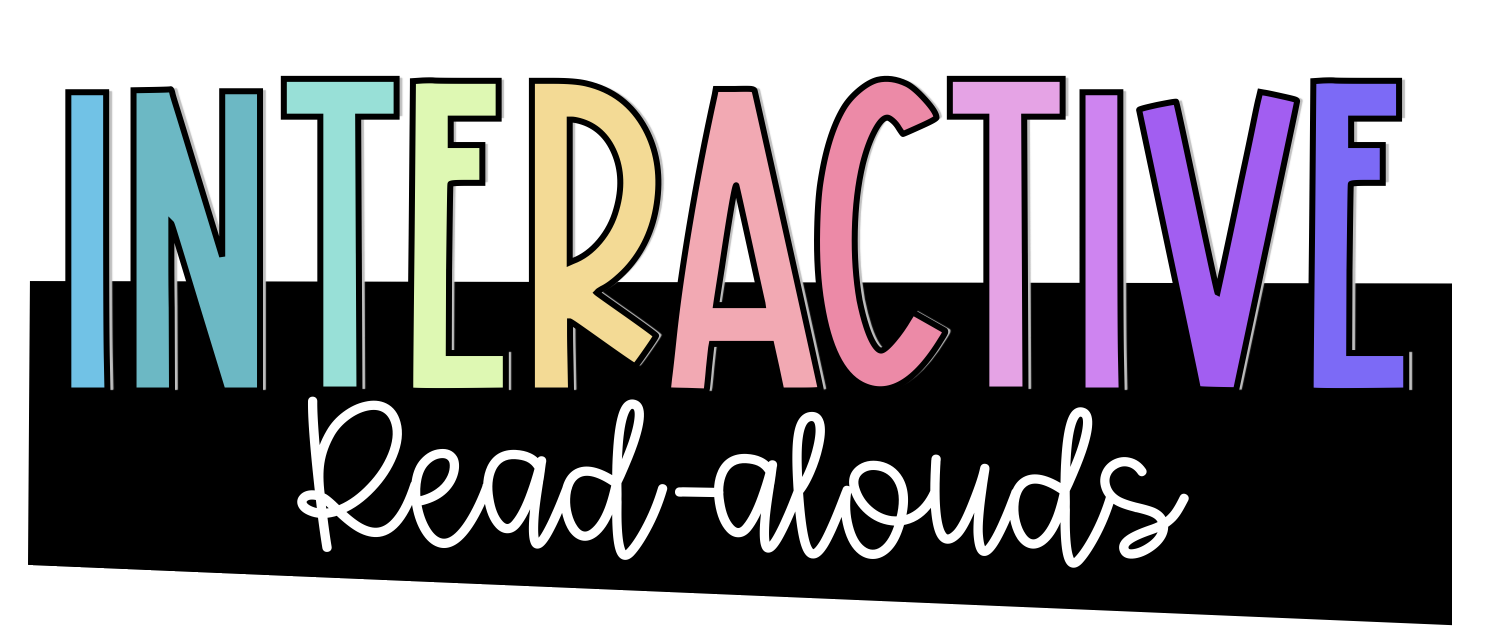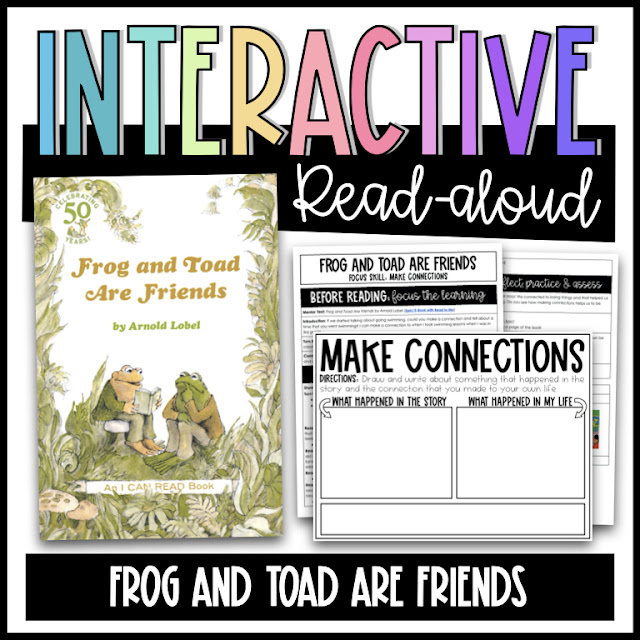An interactive read-aloud is a reading lesson that is focused on one standard and taught through the reading of one book and the guided conversation that students engage in before, during, and after reading. In an interactive read-aloud, the teacher models fluent reading and guides students to apply a comprehension skill to a text that is on, or slightly above, their reading level.
The short answer to this question is ALL OF THEM! I have taught Kindergarten, 3rd, and 5th grade, and I've worked with students in grade K-5 as a reading intervention teacher, and I've used interactive read-alouds with all of them! Although many of these texts are intended for emerging readers, they can be extremely heplful in explicitly teaching comprehension skills to more advanced readers.
- Ideas for using interactive read-alouds in the lower grades (K-2): Since these texts are at, or slightly above, your students' independent reading levels, you can use these for your whole group reading minilessons. The discussion questions will allow students who are not yet fluent writers to participate orally. In my interactive read-alouds I have included differentiated options for follow-up activities so that all students can participate, regardless of whether they are able to read or write yet.
- Ideas for using interactive read-alouds in the upper grades (3-5): Even though these books are below the independent reading levels of most of your students, you can always use them to introduce a new reading skill and then have students practice applying the skill to higher level texts. You can also use them to reteach a skill that students are struggling to master either as a minilesson or in a small strategy group. I have also found these to be helpful when working with English Language Learners as the vocabulary tends to be simpler and supported by pictures!
One challenge of teaching reading this way is that it requires you to have a LOT of books. While I know many teachers have plenty of books to choose from in their classroom libraries at school, I also know that going into the building and lugging those books back and forth is not an ideal plan right now.
Because of that, I started by rounding up as many books that are available for free online right now and will be sharing interactive read-aloud plans for those first. In my experience, Epic! has been the best place to access free books for virtual instruction.
I've mentioned this before, but if you have not signed up for a free educator account on Epic!, now is the time to do so! I love Epic! because, unlike a lot of other sites with free e-books, they have actual, published books. That is not to say that other sites that write their own books to follow their literacy curriculum plan are not good, but these are books that you could go out and buy a copy of since they are not exclusively available on Epic!'s site.
If your district allows it, you can sign your students up (also for free) and assign them books. That means that you could read aloud a book during a live lesson and then have your students practice reading it or listening to it (they have audiobooks and recorded read alouds too) independently for homework/classwork the next day to work on improving fluency and comprehension!
- Lesson plans: Two pages of detailed lesson plans that include a script for what to say and do before, during, and after reading with suggestions for extension activities.
- Graphic Organizer: PDF & JPG versions of two differentiated graphic organizers to help students make connections while reading independently.














No comments